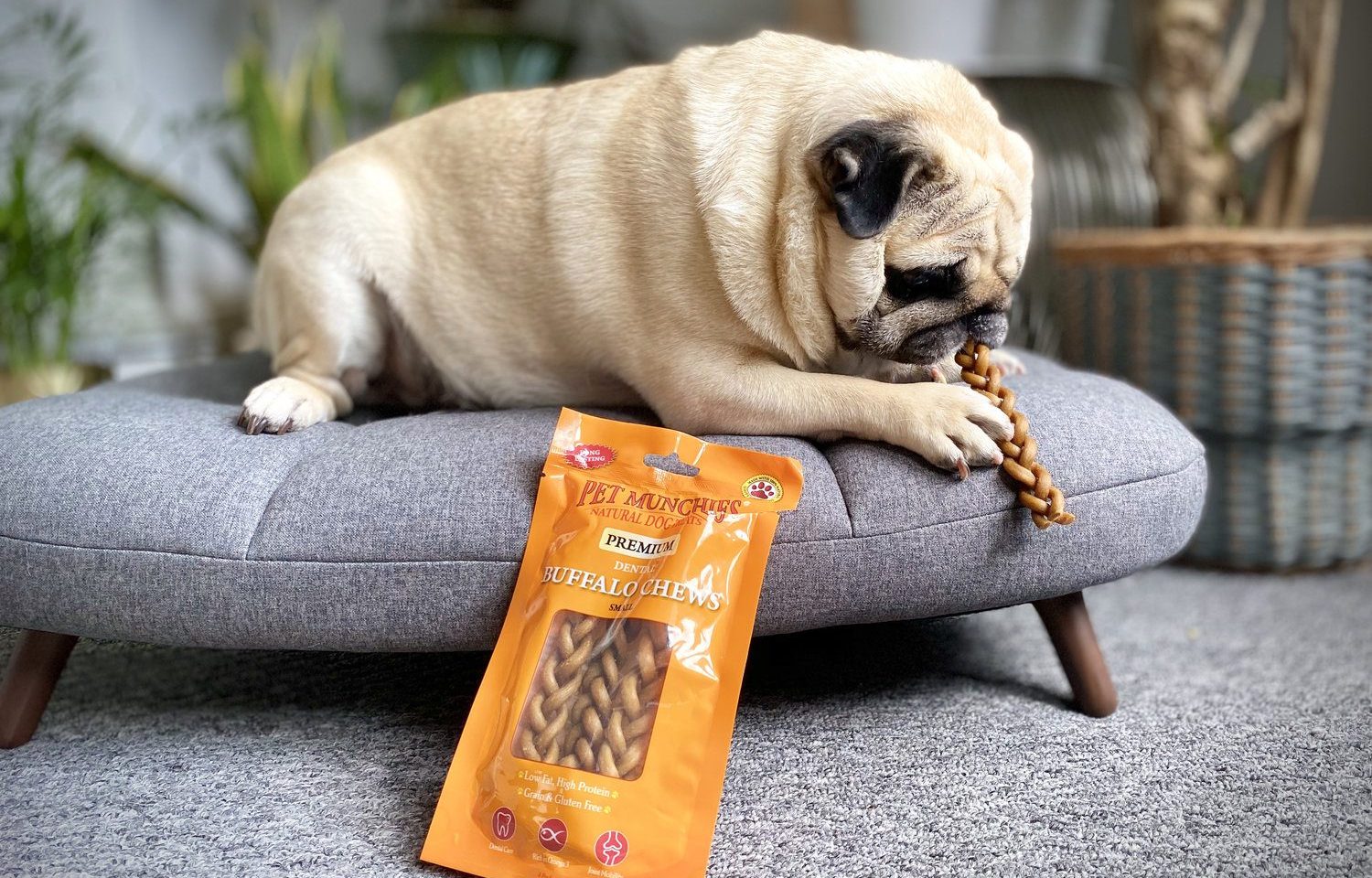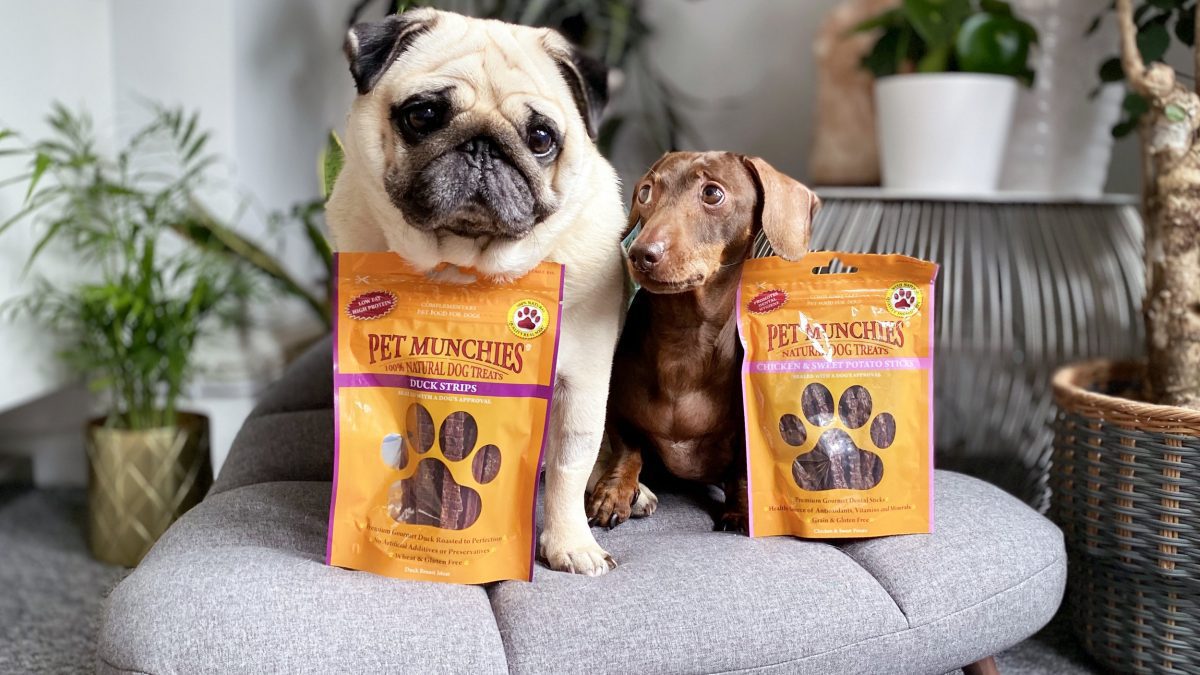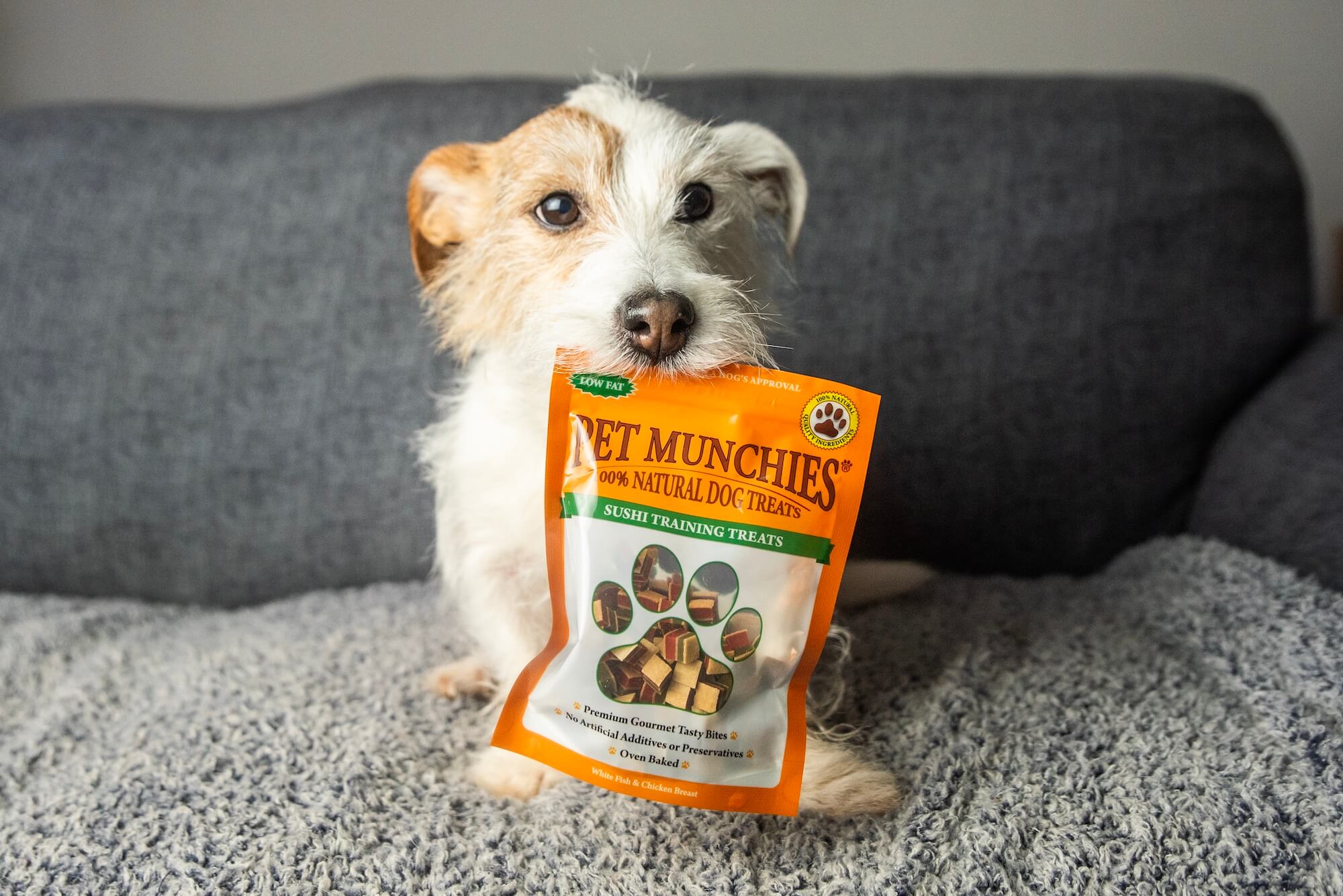If you share your life with a canine companion, you’ll no doubt use dog treats for recall, rewarding good behaviour, or just showing your dog some love now and again. But as pet parents, we all want to give our furry family members the best care possible. This means choosing a good-quality, nutritionally complete dog food…but what about treats? Although treats should make up no more than 10% of your dog’s calorie intake, it’s understandable that you’d want to choose healthy dog treats too.
So, what are the benefits of natural treats for dogs? Are they the healthiest way to spoil your pooch? And what should you look out for when choosing a natural dog treat?
What makes a pet brand 'natural'?
The pet food industry is tightly regulated, and there are many laws to control what ingredients can be used and which terms can be used to describe them on their packaging and marketing. Even so, it’s worth doing your research to make sure you’re truly getting what you think you are. For example, the term ‘natural’ means it must only be formed from animal, plant, or mined products. If you want reassurance that you’ve chosen a good treat option, high-quality natural dog treats will often use just one or two ingredients. Using a reputable brand that you’ve researched well, will ensure that you choose a high-quality, safe, and nutritious natural dog treat that your pooch finds delicious.

If you want your dog to benefit from natural dog treats, what ingredients should you be looking out for?
A single protein source
You might think that dogs thrive on variety. After all, it is the spice of life! However, the benefit of choosing a natural dog treat that uses a single protein source is that it’s less likely to cause your dog allergies. An allergy is an overreaction of the immune system to something foreign. Like humans, dogs can be allergic to almost anything, including parasites, pollen, insect bites, and foods. Any food ingredient can cause allergies, but most allergens are proteins, with beef protein being the worst culprit.
By restricting the number of protein sources a treat contains, the ingredients list becomes much clearer. This means it’s much easier for you to choose a suitable and safe treat if your dog does have known food allergies. Your dog can’t be allergic to an ingredient they’ve never had before, so the basis of many hypoallergenic doggy diets is to use a novel protein and carbohydrate source. Choosing a hypoallergenic dog treat containing a protein source that your dog’s never had before, like salmon, for example, could help control your dog’s allergy.
A source of fatty acids
It’s not just skin allergies that could be helped with natural dog treats. If your dog suffers from any chronic skin problems like frequent bacterial infections, yeast overgrowth, seborrhoea, and other types of dermatitis, they might benefit from fatty acids like omega-3 and 6. These essential fatty acids help repair and maintain the skin barrier, keeping nasty bacteria out and supporting the healing process if the skin is damaged. Fish-based natural dog treats are high in fatty acids, so they could be a great option to improve your dog’s skin and coat. Fatty acids aren’t just beneficial for skin either; they also help keep your furry friend’s joints healthy and are vital for their immune system.
Vitamins and minerals
Although your four-legged friend will be getting plenty of nutrients from their dog food, if it’s complete, it’s still a good idea to choose healthy and nutritious dog treats. Whether it’s salmon for extra vitamin D, or carrot to boost antioxidants, there’s plenty of choice out there.

Low-fat options
Not all fats are good fats, and if your pooch is prone to piling on the pounds, you’ll probably be looking for a healthy natural dog treat. After all, obesity can lead to health issues like diabetes and heart disease and make painful mobility problems like arthritis much worse. Low-fat dog treats will allow you to spoil your dog without leaving you feeling guilty or worried about their long-term health.
Grain-free
Grain-free diets for dogs have been very popular in recent years. After all, grains can be allergens. However, as mentioned previously, not all dog allergies are related to food, and even fewer are related to grain. Of course, if your dog has a grain allergy, then grain-free dog treats will be an essential part of keeping the allergy under control.
Free from unwanted additives
The benefit of giving your dog natural treats, from reputable sources, is that you’ll be more aware of what exactly you are putting into their bodies. As humans, we are becoming much more selective about what we put into our bodies as food, often choosing products that are fresh, simple, and free from artificial flavourings and colourings. So, of course we want our furry friends’ foods to be free from rubbish too! Natural dog treats with a limited ingredient list mean you can choose a type of treat that suits your dog without risking giving them an upset belly or other adverse reactions. Remember, though, whenever you introduce a new food or treat to your dog, you should start with a small amount and introduce it slowly.
Raw-hide free but still good for keeping teeth healthy
Just like in humans, plaque and tartar that build up on your dog’s teeth can cause them to have painful gingivitis, infections, and even lose their teeth. Alongside brushing your dog’s teeth, friction from dental chews can remove plaque forming bacteria, leaving your pooch with a pain-free mouth and dazzling smile! Make sure you choose a safe dental chew, that won’t damage their teeth or cause them other health issues.
A healthy option for puppies
When you have a new puppy, their immature guts and developing immune system mean you have to be extra careful about what they eat or scavenge off the floor. You also have to make sure they’re fed good-quality puppy food that supports their growth and development while providing enough calories to meet their energy demands. Natural treats for puppies can be a healthy accompaniment to your puppy’s diet and can help with training too.
Summary
With so many different dog treats available, it can be hard to know which is best. However, there are clear benefits to dog treats that are low in fat, high in protein and containing nutrients like fatty acids. If, in addition, you consider a natural dog treat with the fewest possible additives and preservatives, you can’t go far wrong.
Dr. Hannah Godfrey BVetMed MRCVS



Leave a comment
This site is protected by hCaptcha and the hCaptcha Privacy Policy and Terms of Service apply.